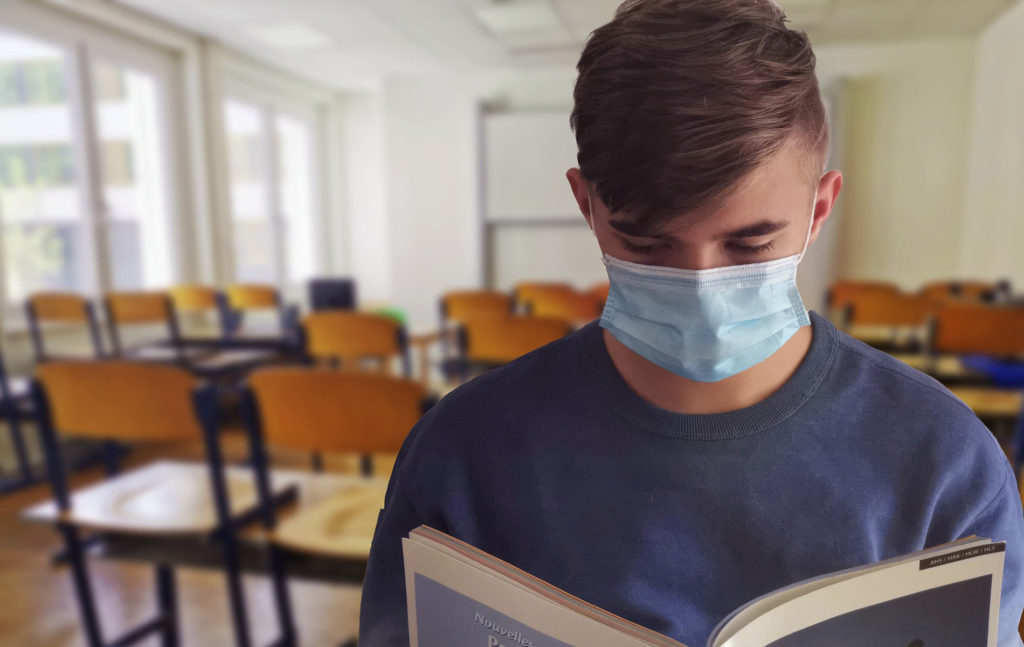
Valencian public universities will implement the UPV tool for crowd control and traceability of COVID-19 infections
All Valencian public universities have decided, after a joint meeting -carried out by video call- between their rectors and the Generalitat Valenciana, to implement in all their campuses DeteCCovid, the computer tool developed by researchers from the Polytechnic University of Valencia (UPV) -belonging to the VRAIN-UPV Institute and the Area of Information Systems and Communications (ASIC-UPV)- to control capacity and avoid crowds, in addition to facilitating traceability in cases of COVID-19 contagion.
The UPV technology, already available through the Intranet of each member of the UPV university community (its acceptance is strongly recommended to maximize its effectiveness and, therefore, our security), is based on an algorithm that, by tracking cell phones in a completely anonymized way, helps to detect people who have been close to a user infected with COVID-19, classifying the risk of infection (very high, high, etc.) depending on how close they have been to the user and the duration of contact.
Data provided through the UPV wifi network.
DeteCCovid was developed last March by the GTIIA group of the VRAIN-UPV Institute to facilitate the manual traceability of contacts with people infected by COVID-19. This tool uses geolocation information provided by mobile devices to build the path, over a period of time, of citizens.
Thus, when an infected person is identified, using these trajectories, it can be determined that other people have been close to them during a sufficient time interval (more than 15 minutes) to be at risk of infection. To do this, big data and classification techniques are used to obtain answers in a few minutes, even when working with huge amounts of information.
Once developed, DeteCCovid was incorporated into U-Tool, a software tool developed in 2016 by the same team of researchers from the UPV and that allows a quick analysis of the activity through the participation of its inhabitants in social networks.
To do this, as explained by Javier Palanca, researcher at GTIIA-VRAIN Institute of the UPV, «DeteCCovid uses a three-dimensional projection (space, time) and tags each anonymous identifier with a risk of contagion based on the information of the place where the contact occurred and the time interval (day, hour, minutes) in which it occurred.»
To assist the manual tracking at the UPV, carried out by the Occupational Health Prevention Service (SPSL), DeteCCovid has been adapted to the characteristics of the UPV. The geolocation information of the mobile devices is obtained from the information detected by the wifi-UPV network (UPVNET or eduroam). For this purpose, ASIC has developed a method that, triangulating the signal that reaches the wifi network antennas, calculates the coordinates of the position of the device.
This information (space, time), encrypted and stored in the UPV databases -guaranteeing privacy and complying with the requirements of the Organic Law on Data Protection-, is used by DeteCCovid to determine which members of the UPV may be at risk of infection when the SPSL is informed that a member of the UPV is infected.
Decisions in the hands of health authorities
DeteCCovid can only be used by authorized persons of the SPSL, who are responsible for manual tracking in the UPV. This manual tracking is the really important one, since those responsible are the only ones who are in possession of the keys that allow decrypting the stored information and access to the identification, after their authorization, of infected people or those at risk of infection.
«The classification of a citizen as infected,» says Vicente Botti, director of the Information Technology and Artificial Intelligence Group (GTIIA) and the VRAIN Institute, «depends solely and exclusively on the health authority, which is also responsible for contacting, when appropriate, people at risk of infection and carrying out tests or adopting appropriate containment strategies for them».
Chair of Artificial Intelligence UPV
DeteCCovid is an initiative carried out within the framework of the Chair of Artificial Intelligence of the UPV, whose official signing with the Department of Innovation, Universities, Science and Digital Society will take place shortly, and in which different units of the UPV have collaborated: in addition to the aforementioned ASIC and VRAIN Institute (Valencian Research Institute for Artificial Intelligence), the Infrastructure Service, the Integrated Service of Prevention and Occupational Health, and the Communication Area.
Click here for more information (spanish)


